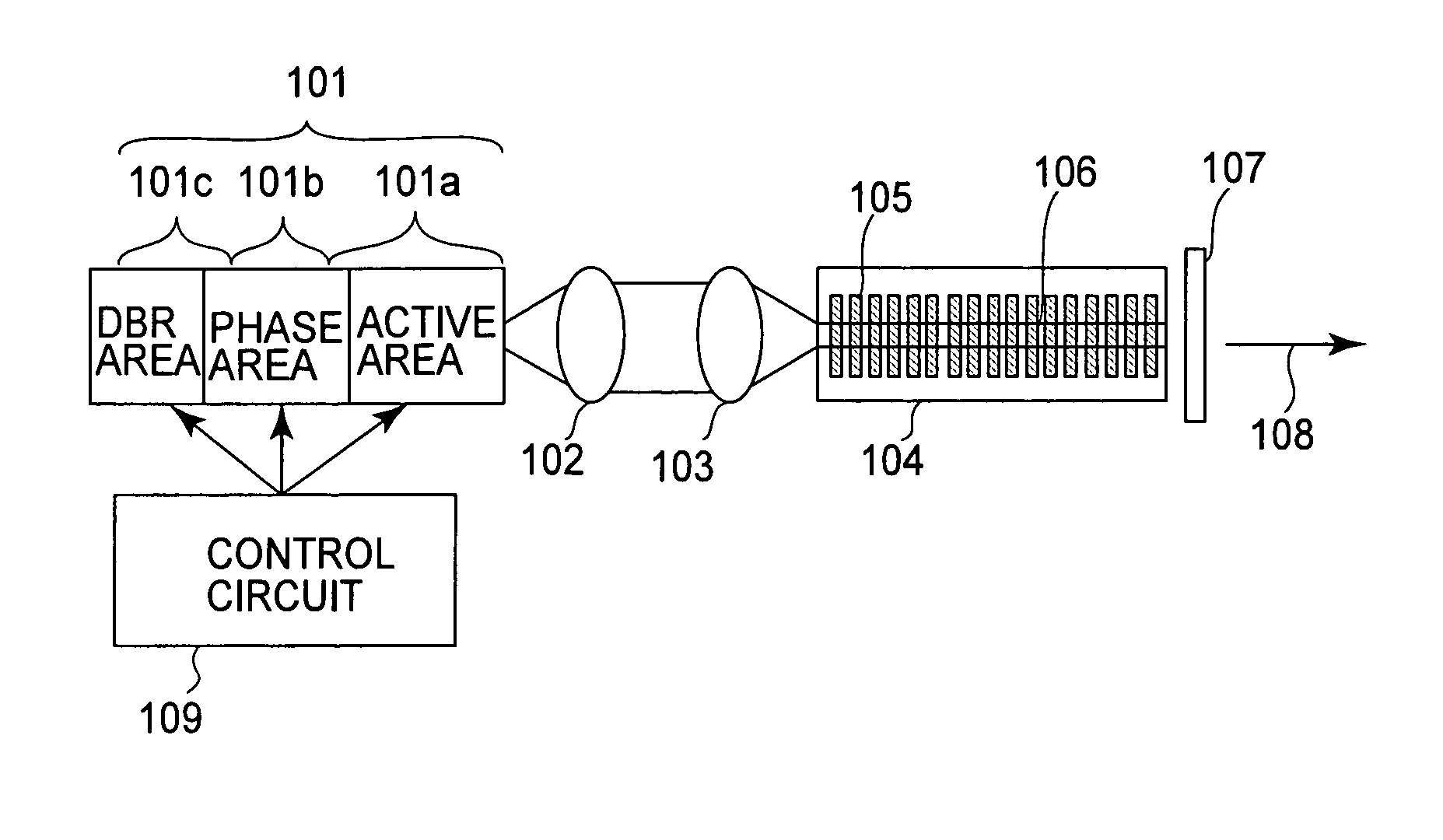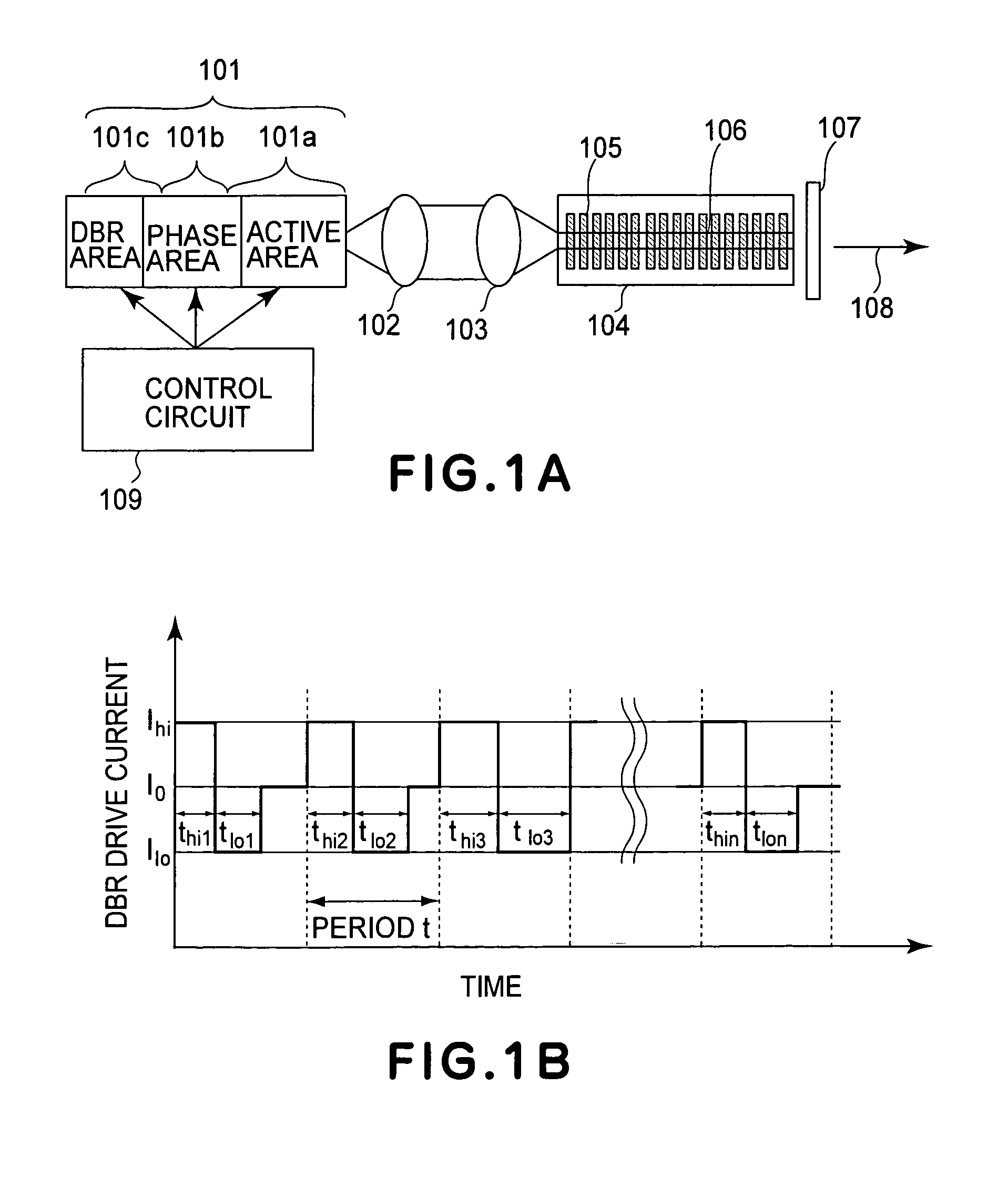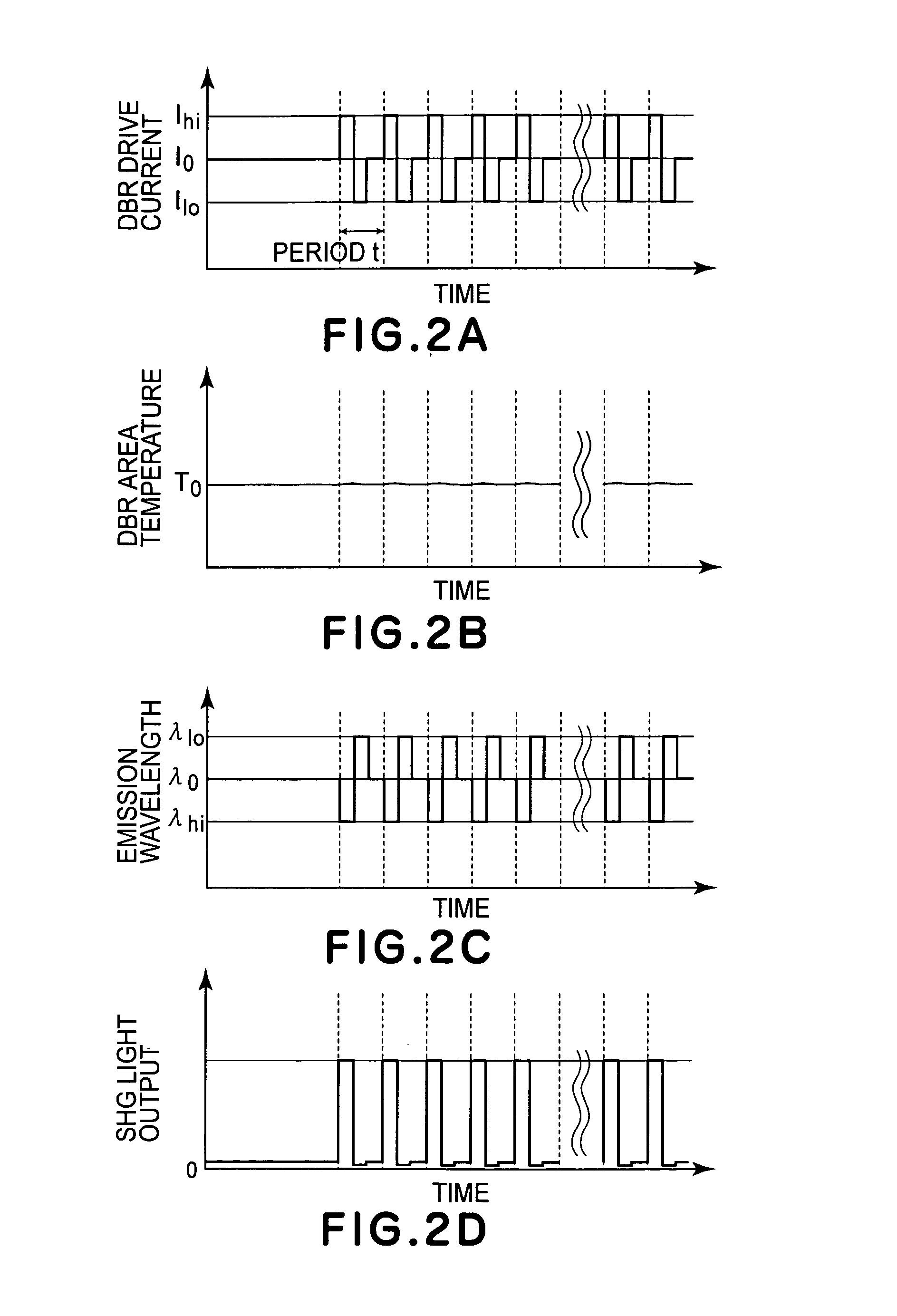Optical wavelength converter and image forming apparatus using the same
- Summary
- Abstract
- Description
- Claims
- Application Information
AI Technical Summary
Benefits of technology
Problems solved by technology
Method used
Image
Examples
embodiment 1
[0044]FIG. 1A shows a constitution of an optical waveform converter according to Embodiment 1 of the present invention. The optical waveform converter include a semiconductor DBR laser 101 has an active area 101a, a phase area 101b, and a DBR area 101c provided with a diffraction grating structure. In the phase area 101b and the DBR area 101c, an emission wavelength can be changed by passing a current through pn junction in a perpendicular direction to change a refractive index of an active layer.
[0045] A current is passed through the active area 101a, the phase area 101b, and the DBR area 101c by a control circuit 109 to concentrate fundamental wave laser light generated by the semiconductor DBR laser 101 at an SHG device through a collimator lens 102 and a condensing lens 103. The SHG device 104 is a waveguide-type quasi-phase adjustment device formed in a device length of 12 mm of LiNbO3 and provided with an optical waveguide 106 including periodically formed polarization invers...
embodiment 2
[0051] In Embodiment 1, the wavelength λhi, during the injection of the current Ihi into the DBR area 101c of the semiconductor DBR laser 101 is adjusted to the phase adjustment wavelength of the SHG device 104. In this embodiment, the wavelength λ0 during the injection of the current I0 into the DBR area 101c is adjusted to the phase adjustment wavelength of the SHG device 104. In addition, in modulation of drive current in the DBR area in this embodiment, a time width (duration) for injecting the current Ihi is extended and changed from a start point of each period t as one reference time and a time width for injecting the current Ilo is extended and changed from a middle point of each period t as another reference time.
[0052] The constitution of the optical waveform converter in this embodiment is identical to that at the optical waveform converter shown in FIG. 1 in Embodiment 1 except that the temperature of the SHG device or the period (pitch) of the polarization inversion ar...
embodiment 3
[0054] In Embodiments 1 and 2, the constant current is injected into the active area 101a. In this embodiment, a modulated current is injected into the active area 101a. The injection current injected into the DBR area 101c in this embodiment is similar to that shown in FIG. 7A in Embodiment 2 and is shown also in FIG. 8A. The injection current injected into the active area 101a is shown in FIG. 8B. In this embodiment, the modulated current (injection current) including two values of IG and Ith such that the pulse width does not depend on period is injected into the active area 101a. Ith is set to a threshold current or a value of not more than the threshold current. Points of Ith are set so that the modulated current to be injected into the DBR area 101c can be changed from Ihi to Ilo (or Ilo to Ihi) Examples of these points include those of the reference times in each period described in Embodiment 2. The pulse width for Ith may desirably be a width (duration) capable of removing ...
PUM
 Login to View More
Login to View More Abstract
Description
Claims
Application Information
 Login to View More
Login to View More - R&D
- Intellectual Property
- Life Sciences
- Materials
- Tech Scout
- Unparalleled Data Quality
- Higher Quality Content
- 60% Fewer Hallucinations
Browse by: Latest US Patents, China's latest patents, Technical Efficacy Thesaurus, Application Domain, Technology Topic, Popular Technical Reports.
© 2025 PatSnap. All rights reserved.Legal|Privacy policy|Modern Slavery Act Transparency Statement|Sitemap|About US| Contact US: help@patsnap.com



